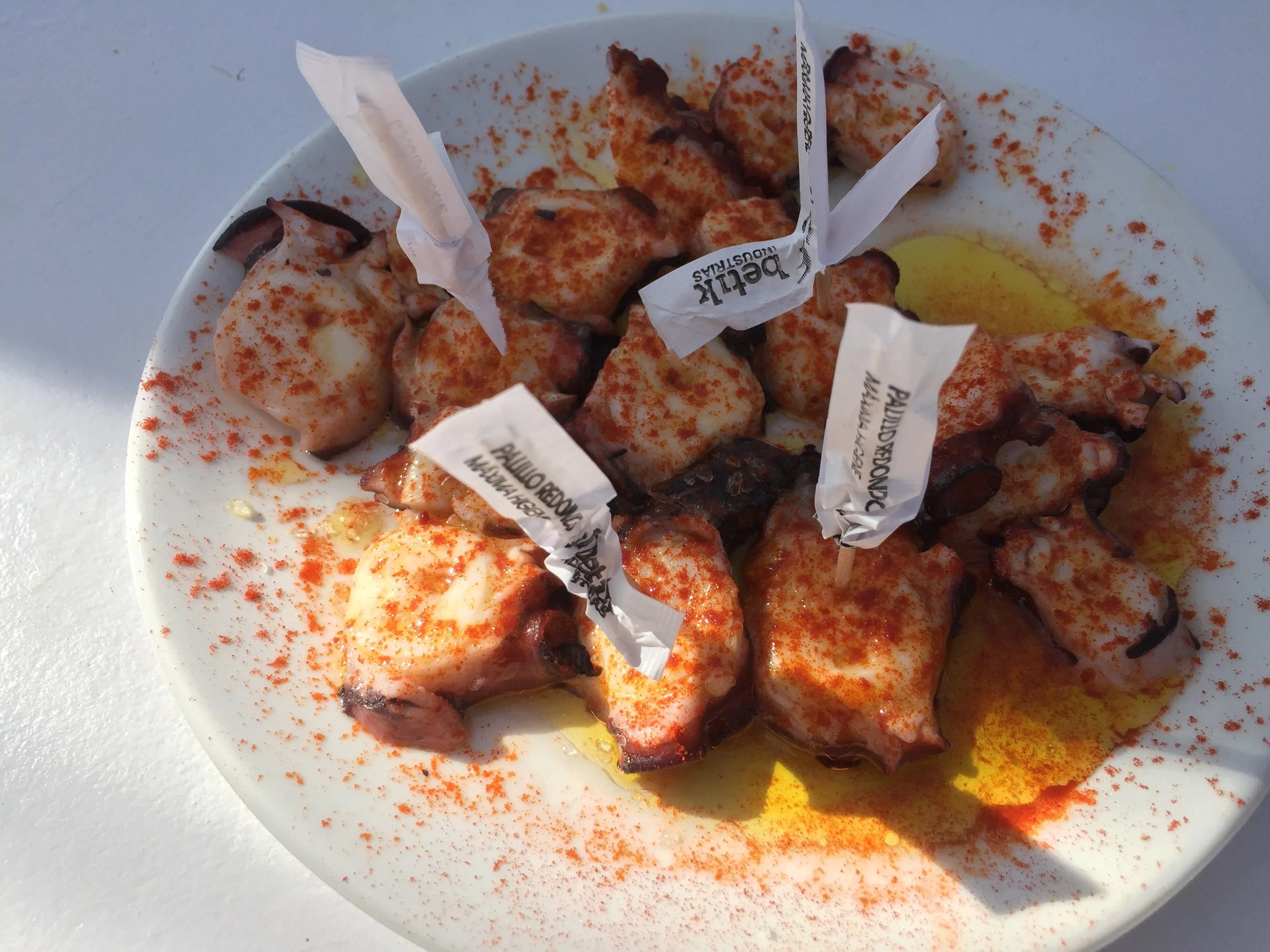Diary of a Shopkeeper, 31st July
It’s a question that has not been addressed in any culinary textbook: what wine is best to drink with spoots. There’s numerous suggestions for accompaniments to queenies, partan and salmon, but our favourite foraged food is never mentioned. Luckily I can provide a definitive answer: Albariño.
A few years ago, I was lucky enough to go on a wine trip to the Rías Baxias area in Galicia, north-west Spain. Even as we flew in towards the airport at Vigo, it was clear this was a version of Spain far removed from the sun-baked, olive-studded plains of the centre and the busy beaches of the south. The coast looked almost Norwegian, with innumerable bays, inlets and fjords – called rías, I discovered – and dense pine forests. There were scattered villages amongst the coastal hills, and patches of vineyards. And when I say patches, I do mean scraps of land, many of them no bigger than your back garden. None of the hundred-acre vineyards you see in Bordeaux or Barossa.
Our visit began with a tour of the winery, which was a modern affair, with many steel tanks for fermentation, and very few oak barrels. Albariño is all about freshness and fruit – no need for toasty, nutty, oak aromas.
Then we proceeded to the wine tasting, which required us, we were told, to drive down through some twisting lanes to a small harbour on the edge of the Ría de Vigo. Once there we were greeted by a man in an anorak, who ushered us aboard a small yacht. I’d never tasted wine on a boat before, but why not! I still wasn’t expecting we’d actually go anywhere, but with seconds the crew was casting off and we headed under sail into the bay, navigating around the hundreds of rafts moored there, home to thousands of tons of mussels.
It was at this point that a hatch in the deck opened, and a man in chef’s whites popped his head out. ‘I hope you like shellfish,’ he said. ‘Like?’ I replied. ‘No! Amo los mariscos!’
And it was just as well. A few moments later a plate of steamed mussels and lemon slices was handed up through the hatch. Delicious. Then came cockles in their shells, grilled and dressed with grassy olive oil. Next was a plateful of small scallops, very like queenies but with darker shells and with white roe. They were also grilled and you were meant to eat the whole thing, including the skirts. A move away from shellfish came next, with a what seemed to be raw monkfish, marinated in lemon juice and olive oil, and sprinkled with copious quantities of paprika. And finally, a steaming bowl of navajas – razor clams, spoots – served with wedges of lemon.
To accompany this seaborne seafood feast we had been served a succession of well-chilled glasses of different Albariños. It’s the great wine speciality of Rías Baxias, and with the sea so close to the vineyards, it’s easy to see why this style of wine should have evolved to match the abundant local seafood.
The hearty reds of Rioja and Ribero del Duero are heavenly with grilled meat or strong cheese, but Spain’s greatest white wine is undoubtedly Albariño. There are many good seafood wines in the world – Vinho Verde from just over the border in northern Portugal, for instance, or limey Sauvignon/Semillon blend from Western Australia. But none has that wonderful Galician combination of peachy aromatics that entice the nose, and zingy acidity that electrifies the tastebuds. Next time you’re planning on some spoots, you better have a bottle of Albariño in the fridge. ¡Salud!
For more information about Albariño, a good place to start is Rías Baixas UK on Facebook, or @AlbarinoUK @doriasbaixas on Instagram.
This diary appeared in The Orcadian on 3rd August 2022. A new one appears weekly. I post them in this blog a few days after each newspaper appearance, with added illustrations., and occasional small corrections or additions.



